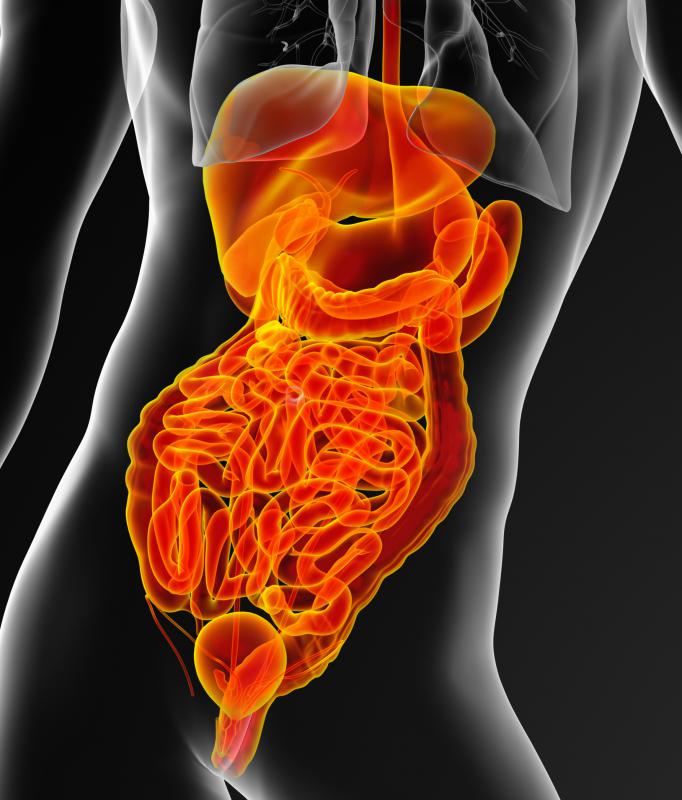At WiseGEEK, we're committed to delivering accurate, trustworthy information. Our expert-authored content is rigorously fact-checked and sourced from credible authorities. Discover how we uphold the highest standards in providing you with reliable knowledge.
What is Adenosine Monophosphate?
Adenosine monophosphate (AMP), or 5’-adenylic acid, is a nucleic acid used for many processes in the human body. Most notably, AMP is a part of ribonucleic acid (RNA), which is used for the transcription and translation of deoxyribonucleic acid (DNA) into proteins in the cell. Adenosine monophosphate is also a precursor of adenosine triphosphate (ATP)—the energy molecule cells use for all life processes. Cyclic adenosine monophosphate (cAMP) is another form of AMP that assists in cell signaling.
A nucleic acid is made up of a chain of nucleotides. Each nucleotide consists of a sugar backbone, at least one phosphate group, and a nitrogenous base. AMP has a backbone of the five-carbon sugar ribose, a single phosphate group, and adenine. Adenine is a purine, meaning it has two rings in its structure. The other type of nitrogenous base, the pyrimidines, have a single ring in their structures.

When RNA decomposes, it creates nucleoside monophosphates. AMP is one of the products. Other products from the decomposition of RNA include guanosine monophosphate (GMP), uridine monophosphate (UMP), and cytidine monophosphate (CMP). Each nucleoside monophosphate is made up of a ribose backbone, a phosphate group, and one of the four nitrogen bases.

AMP can also be produced by hydrolysis of ATP. Hydrolysis is the addition of water to break apart a molecule or compound. Adding one water molecule to ATP will release one phosphate group making adenosine diphosphate (ADP). If another water molecule is added, the ADP will release another phosphate group producing AMP.
Adenosine monophosphate can use an enzyme to reattach a phosphate group to create ADP. This process is called dehydration synthesis because a water molecule is released. Then, the ADP can use a different enzyme to attach another phosphate group, making ATP. The removal and addition of the phosphate groups happen as the body needs energy or has excess to store.

Cyclic adenosine monophosphate is needed to carry messages from the cell surface to the nucleus. External signals, such as hormones like adrenaline, are not allowed to pass through the plasma membrane of the cell. cAMP relays the message from the receptor on the cell surface, through the cytoplasm, and into the nucleus of the cell through signal transduction. cAMP may also assist ions as they pass through the cell membrane through ion channels.

Patients with deficiencies in this substance may benefit from taking an AMP supplement. Disorders such as sensitivity to light and shingles are known to result from low levels of AMP. Taking a supplement with small amounts of AMP may help relieve symptoms of these diseases.
AS FEATURED ON:
AS FEATURED ON:














Discuss this Article
Post your comments